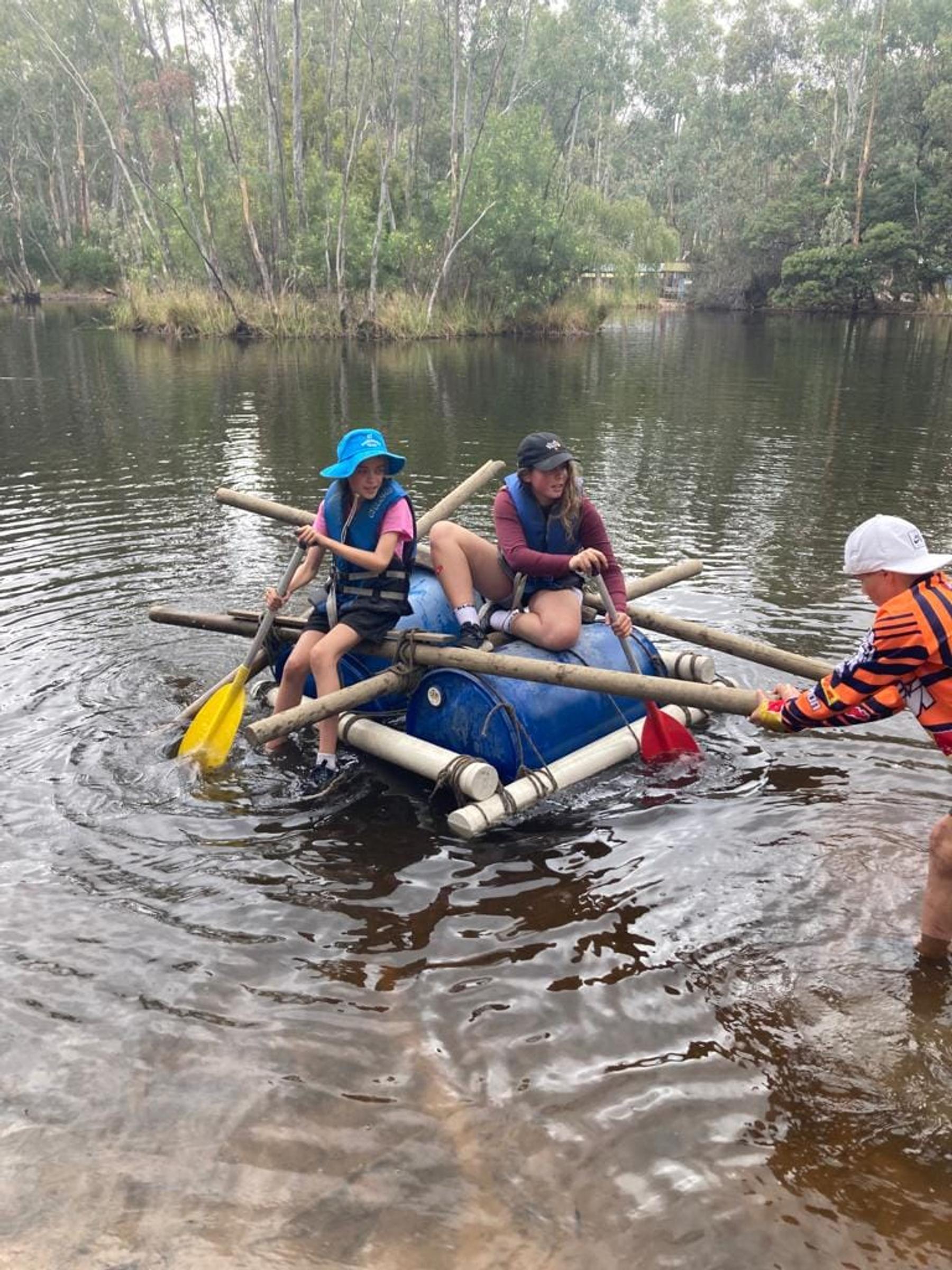WELLBEING

Accessing Wellbeing:
Students can access wellbeing via an online booking form for Wellbeing and health related matters.
Student Wellbeing Check In Request Form
Parents/ Carers can access supports from Wellbeing for their young person via the Administration Office.
SURFSUP WITH THE WELLBEING TEAM
The term is certainly speeding along!
The Easter break will be here shortly, and we hope you have some great plans to take you out with family and friends to enjoy the Autumn weather. The abundance of chocolate easter eggs and hot cross buns have certainly taken over the shelves in supermarkets – and like the wellbeing team I am sure students enjoy these treats also!
This newsletter will be about self-regulation and problem solving. These skills are so important for young people to explore and understand as it helps them build relationships with others in a positive way. Allowing your child the ability to manage their emotions is important for fostering positive mental health and wellbeing.
What is self-regulation?
Self-regulation is the ability to understand and manage your behaviour and your reactions to feelings and things happening around you.
It includes being able to:
- Regulate reactions to strong emotions like frustration, excitement, anger and embarrassment
- Calm down after something exciting or upsetting
- Focus on a task
- Refocus attention on a new task
- Control impulses
- Behave in ways that help you get along with other people.
Why self-regulation is important
As your young person grows, self-regulation helps them:
- Learn at school – because self-regulation gives your child the ability to sit and listen in the classroom
- Behave in socially acceptable ways – because self-regulation gives your child the ability to control impulses
- Make friends – because self-regulation gives your child the ability to take turns in games and conversation, share toys, and express emotions in appropriate ways
- Become more independent – because self-regulation gives your child the ability to make appropriate decisions about behaviour and learn how to behave in new situations with less guidance from you.
How and when self-regulation develops
Children develop self-regulation through warm and responsive relationships. They also develop it by watching the adults around them. Self-regulation starts when children are babies. It develops most in the toddler and preschool years, but it also keeps developing right into adulthood.
School-age children are getting better at controlling their own wants and needs, imagining other people’s perspectives and seeing both sides of a situation. This means, for example, that they might be able to disagree with other children without having an argument.
Preteens and teenagers are better at planning, sticking with difficult tasks, behaving in socially appropriate ways, and considering how their behaviour affects other people. For example, your teenage child might think about your perspective when they’re negotiating with you about their curfew.
Key points
- Self-regulation is the ability to understand and manage your own behaviour and reactions.
- Self-regulation helps children and teenagers learn, behave well, get along with others and become independent.
- Self-regulation begins to develop rapidly in the toddler and pre-schooler years. It continues to develop into adulthood.
- Ways to develop your child’s self-regulation include talking, planning, problem-solving and role-modelling.
Why problem-solving skills are important
Everybody needs to solve problems every day. But we’re not born with the skills we need to do this – we have to develop them.
When you’re solving problems, it’s good to be able to:
- listen and think calmly
- consider options and respect other people’s opinions and needs
- negotiate and work towards compromises.
These are skills for life – they’re highly valued in both social and work situations. When teenagers learn the skills and strategies for problem solving and sorting through conflicts by themselves, they feel good about themselves and places them in a better position to make good decisions on their own.
Problem-solving: 6 steps – Taken from Raising Children’s Network
Often you can solve problems by talking and negotiating.
The following 6 steps for problem-solving are useful when you can’t find a solution. You can use them to work on most problems, including difficult choices or decisions and conflicts between people.
If you practise these steps with your child at home, your child is more likely to use them with their own problems or conflicts with others.
1. Identify the problem
The first step in problem-solving is working out exactly what the problem is. This can help everyone understand the problem in the same way. It’s best to get everyone who’s affected by the problem together and then put the problem into words that make it solvable. It is important to do this when everyone is calm and can think clearly – this will allow more opportunity for your young person to think through some solutions.. and thank them for joining in to solve the problem.
For example:
- ‘You’ve been invited to two birthday parties on the same day and you want to go to both.’
- ‘You have two big assignments due next Wednesday.’
- ‘We have different ideas about how you’ll get home from the party on Saturday.’
- ‘You and your sister have been arguing about using the Xbox.’
2. Think about why it’s a problem
Help your young person to describe what’s causing the problem and where it’s coming from. It might help to consider answers to questions like these:
- Why is this so important to you?
- Why do you need this?
- What do you think might happen?
- What’s upsetting you?
- What’s the worst thing that could happen?
Try to listen without arguing or debating. This is your chance to really hear what’s going on with your child. Encourage your child to use statements like ‘I need … I want … I feel …’, and try using these phrases yourself. Try to encourage your child to focus on the issue and keep blame out of this step.
3. Brainstorm possible solutions to the problem
Make a list of all the possible ways you and your child could solve the problem. You’re looking for a range of possibilities, both sensible and not so sensible. Try to avoid judging or debating these yet.
If your child has trouble coming up with solutions, start them off with some suggestions of your own. You could set the tone by making a crazy suggestion first – funny or extreme solutions can end up sparking more helpful options. Try to come up with at least 5 possible solutions together.
For example, if your children are arguing about using the Xbox, here are some possible solutions:
- ‘We buy another Xbox so you don’t have to share.’
- ‘The two of you agree on when you can each use the Xbox.’
- ‘You each have set days for using the Xbox.’
- ‘You each get to use the Xbox for 30 minutes a day.’
- ‘You put away the Xbox until next year.’
Write down all your possible solutions.
4. Evaluate the solutions to the problem
Look at the pros and cons of all the suggested solutions in turn. This way, everyone will feel that their suggestions have been considered.
It might help to cross off solutions that you all agree aren’t acceptable. For example, you might all agree that leaving your children to agree on sharing the Xbox isn’t an option because they’ve already tried that and it hasn’t worked.
When you have a list of pros and cons for the remaining solutions, cross off the ones that have more negatives than positives. Now rate each solution from 0 (not good) to 10 (very good). This will help you sort out the most promising solutions.
The solution you and your child choose should be one that your child can put into practice and that could solve the problem.
If you haven’t been able to find one that looks promising, go back to step 3 and look for some different solutions. It might help to talk to other people, like other family members, to get a fresh range of ideas.
5. Put the solution into action
Once you’ve agreed on a solution, plan exactly how it will work. It can help to do this in writing, and to include the following points:
- Who will do what?
- When will they do it?
- What’s needed to put the solution into action?
In the Xbox example, the agreed solution is ‘You each get to use the Xbox for 30 minutes a day’. Here’s how you could plan how the solution will work:
- Who will do what? Your children will have turns at different times of the day.
- When will they do it? One child will have the first turn after they finish their homework. The other child will have their turn after dinner, when their friends are playing.
- What’s needed? You need a timer, so each child knows when to stop.
You could also talk about when you’ll meet again to look at how the solution is working.
6. Evaluate the outcome of your problem-solving process
Once your child or children have put the plan into action, you need to check how it went and help them go through the process again if they need to.
Remember that your child will need to give the solution time to work and that not all solutions will work. Sometimes they’ll need to try more than one solution. Part of effective problem-solving is being able to adapt when things don’t go as well as expected.
Ask your child the following questions:
- What has worked well?
- What hasn’t worked so well?
- What could you or we do differently to make the solution work more smoothly?
If the solution hasn’t worked, go back to step 1 of this problem-solving process and start again. Perhaps the problem wasn’t what you thought it was, or the solutions weren’t quite right.
Key Focuses-
*Some conflict is natural and healthy
*Sometimes you might not be able to find a solution that makes everyone happy. But by negotiating and compromising, you should be able to find a solution that you can all live with
*By putting time and energy into your young persons problem solving skills, you send them the message that you value their input into important decisions and you think they are capable of managing their problems. This can be great for building happy and healthy relationships with your young person.
For further information to support your young person you can take a look at these links
conflict management strategies
https://beyou.edu.au/fact-sheets/social-and-emotional-learning/self-regulation
As Always stay kind and reach out if you need too.
~ Michelle, Mel, Jas and Rachel.
Mate Space / Headspace
Headspace Geelong has been hosting Mate Space sessions in Torquay.
These male only sessions are held inside the Youth Centre at KMCC and runs from 4pm-6pm.




